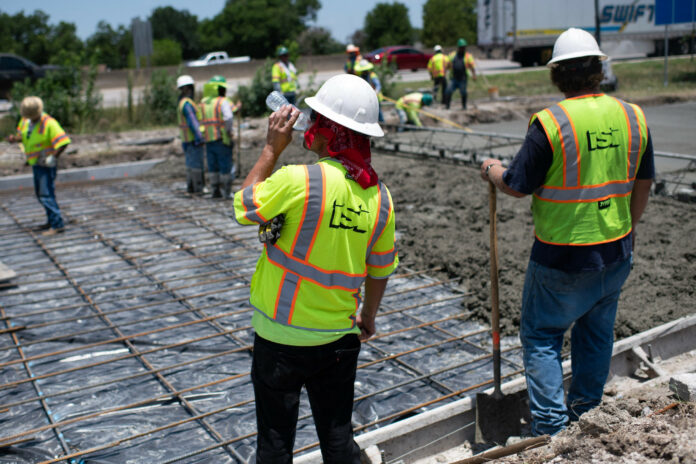The Employment Cost Index (ECI), the Federal Reserve’s preferred measure of labor costs, saw its smallest quarterly increase in more than two years, rising by just 0.9 percent in the fourth quarter, indicating a positive shift in the central bank’s fight against inflation.
A quarterly economic series detailing the changes in the costs of labor for businesses in the U.S. economy, the ECI data for the quarter suggests a cooling of inflationary pressures within the job market. Despite considerable pay increases negotiated by major unions, the overall labor cost growth has moderated, according to a report issued Wednesday by economists at Wells Fargo, marking a potential turning point in the broader economic battle against inflation.
The trend, crucial for the Fed’s monetary policy decisions, may signal a move toward more balanced labor market conditions, according to the report.
Further, the reading on labor cost growth supports the Fed’s confidence that the current reduction in inflation is sustainable. The year-over-year change in the ECI fell to 4.2 percent, a decrease from more than 5 percent in the previous year, Wells Fargo said. Notably, on an annualized basis, employment costs rose at a rate of 3.5 percent in the fourth quarter, aligning closely with the Fed’s 2 percent inflation target when considering recent productivity trends.
MARK FELIX/AFP via Getty Images
The moderation in wage and salary increases in the fourth quarter was consistent across private industry and government sectors, Wells Fargo said, indicating a more widespread slowdown in compensation cost growth.
The positive ECI print aligns with Wednesday’s decision by the Fed to maintain its current Fed funds (interest rate) levels at 5.25 percent to 5.5 percent. The steady rate reflects the central bank’s assessment that the risks to achieving its dual goals of maximum employment and 2 percent inflation are becoming more balanced.
That extended period of stability in interest rates, the longest since the rate hike cycle began in March 2022, suggests a cautious yet optimistic outlook from the central bank.
“The Fed was badly burned in late 2021 and 2022 when they thought high inflation would be transitory, then got caught by surprise when it was higher and more persistent than expected,” Bill Adams, chief economist at Comerica Bank, shared with Newsweek. “They want to avoid making the same mistake twice. The Fed will wait to pull the trigger on rate cuts until they see the whites of 2 percent inflation’s eyes.”
In his remarks, Fed Chair Jerome Powell drew attention to the need for greater assurance that inflation is steadily moving toward the Fed’s target. While the aggressive rate hikes implemented last year have led to higher borrowing costs, the central bank is prepared to adjust its policies in response to decreasing inflationary pressures, noting that it is forecasting five rate cuts by the end of this year, which would put its Fed funds rate at between 4 percent and 4.25 percent.
As the economy showed resilience in the last quarter, outperforming expectations, the potential for avoiding a recession seems more likely, experts said.
Overall, the combination of cooling labor costs and steady Fed policies points to an economy moving toward stability, with a cautious eye on maintaining the balance between growth and inflation control.
Uncommon Knowledge
Newsweek is committed to challenging conventional wisdom and finding connections in the search for common ground.
Newsweek is committed to challenging conventional wisdom and finding connections in the search for common ground.


